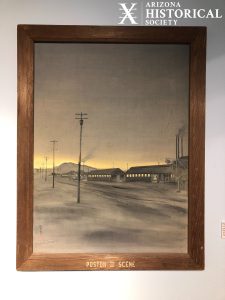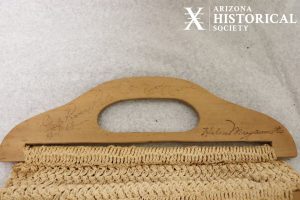February 19, 2023
On this day in 1942, President Franklin Delano Roosevelt signed Executive Order 9066, commanding the military “to prescribe military areas in such places and of such extent… from which any or all persons may be excluded.” The term “persons” was never defined as a specific group, but Executive Order 9066 was only applied to Americans of Japanese ancestry. The resulting Exclusion Zone where Japanese Americans could not live cut across the West Coast and down through Arizona. This forced over 120,000 people to leave their homes and livelihoods to become prisoners.
81 years later, we observe this Day of Remembrance to honor those who were imprisoned. Over 30,000 of these Americans of Japanese ancestry lived in two incarceration camps in Arizona called Poston and Gila River. Despite their imprisonment, Japanese Americans found ways to create joy and pass the time. Some made art, like Kakunen Tsuroka. Using shoe polish as paint, he depicted scenes of his incarceration in Camp III at Poston on a curtain. Other prisoners crafted, like Helen Miyamoto, who crocheted and engraved a wave-patterned bag while imprisoned at Gila River. And many other incarcerated Japanese Americans found joy in baseball. For players, coaches, and audience members alike, from the Father of Japanese American baseball Kenichi Zenimura to future professional Satoshi “Fibber” Hirayama, “America’s Pastime” was a means of enduring and escaping their imprisonment.
So today, we remember these individuals and the thousands of other Americans of Japanese ancestry imprisoned during World War II.



These artifacts and many other stories are featured in the new exhibit Rebuilding Home Plate, located at the Arizona Heritage Center and open until May 27, 2023.

#WhoWeRemember
Written by: Elizabeth Kapp, AHS Curator



